Apple Vision Pro presented at WWDC 2023
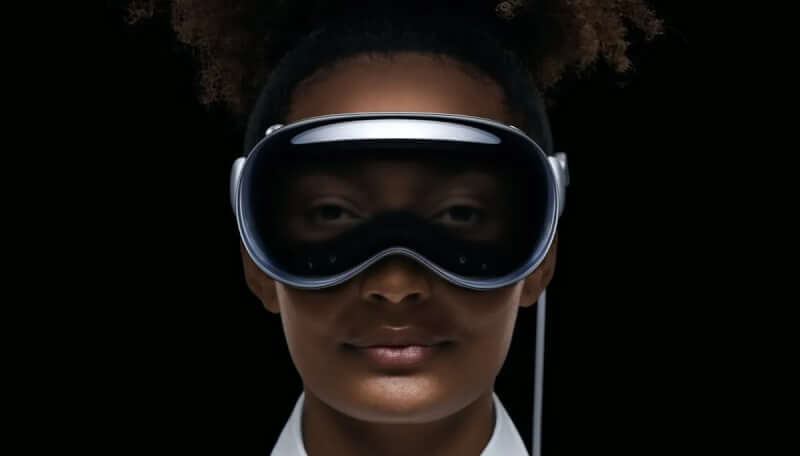
The name of the upcoming headset will be Apple Vision Pro, and it will arrive in stores at the beginning of next year. The price will be 3,500 dollars or around 25,000 Danish kroner.
So it will be, in very typical Apple style, a First Mover product that does not aim for the masses in the first place. For example, Meta has also just announced their new Meta Quest 3, which comes with a somewhat more palatable price of 500 dollars
Both design, and not least the technology in the Apple Vision Pro, are in many ways in a different class, which largely helps to raise the price, and separate it from many other offers on the market.
Sensors, sensors and more sensors
Perhaps one of the most obvious differences, apart from the very stylish Apple design, is the total lack of controllers. There are no controllers for the Apple Vision Pro, nor are there plans to make any. All control is done via hand/finger movements, your eyes and your voice.
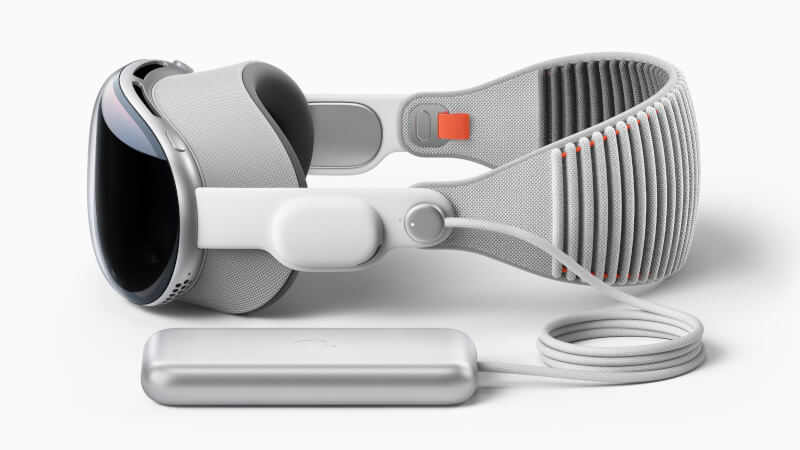
It can of course be done because the headset is equipped with a sea of sensors. There are a total of 12 cameras, infrared sensors, a LiDAR scanner and six microphones. All sensors are designed to keep an eye on what is happening around you and the headset. So they are the ones that partly scan your surroundings and map them, but they also scan your hands to be able to use them as input instead of a controller.
All the external sensors are supplemented by internal sensors, which consist of a combination of "LED illuminators" and IR cameras, which are there to track your eyes. The few people who have tried the new Apple Vision Pro headset call the eye tracking functionality impressive and super well-functioning.
The screens
One of the most important components for a good VR/AR experience is undoubtedly the screens. This is where all content is presented, and will be the primary way to absorb information and content.
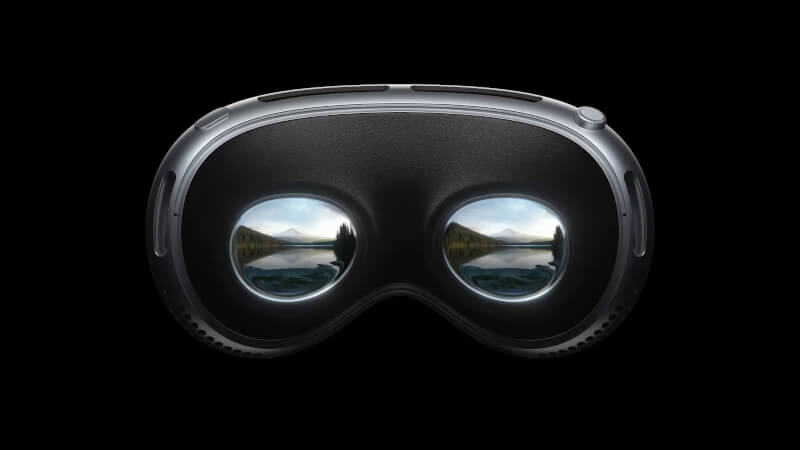
Screens on VR and AR headsets have always been a challenge because they are placed as close to the eye as they are. This means that in many cases you can see the individual pixels on the screen, in what is called a Scenedoor Effect. The Apple Vision Pro set uses two Micro OLED displays, which have squeezed 64 pixels into the same space that a single pixel takes up on your iPhone screen. This means that you end up with 23 million pixels to work with.
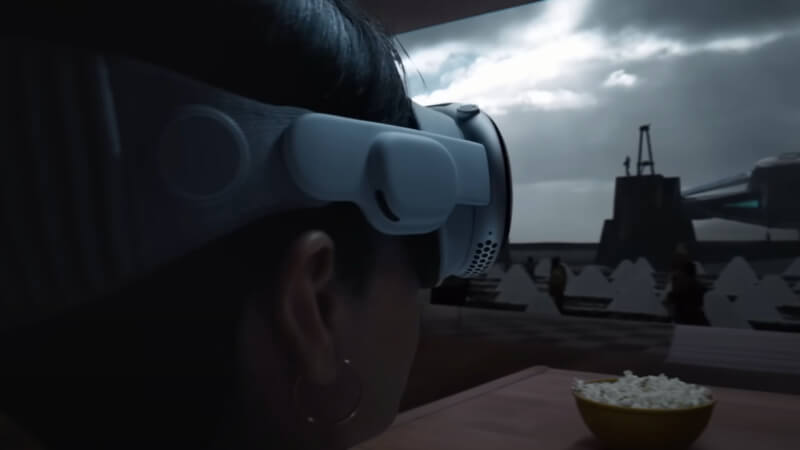
The result is that a higher resolution than 4K has actually been squeezed into the small size that the headset uses. On paper at least, it should provide a quality that we haven't seen on other sets before.
Hardware
To power it all, Apple has created a dual chip setup, with an Apple M2 chip for the "regular" part of the process, such as running the OS, Apps, etc. It is complemented by the new R1 chip, which is dedicated to processing everything the sensor data that the set constantly collects from your surroundings and eyes.
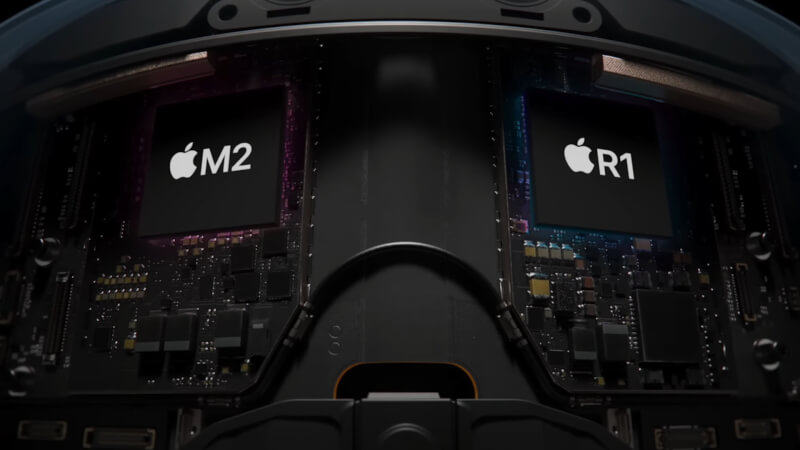
The entire system is powered by an external battery which is connected via a magnetic cable and which is easy to carry in your pocket so you can move around freely. The battery provides power for about two hours of use. However, a charger can be set up via USB C, so that in principle you never run out of power.
All of this is powered by the new visionOS operating system, which was developed specifically for Apple Vision Pro and which comes with its own app store. Initially, it will primarily be Apple's own apps found on the set, but there will of course be much more. This is also the reason why the kit was presented at WWDC, so that developers now have the opportunity to work with their app for the kit, towards the launch at the beginning of next year.
What will it be used for?
Apple itself positions the Apple Vision Pro as a device for both work and entertainment. A large part of the presentation shows how you can use a set as a tool in your work. It can be for meetings, presentations, emails and design work.
The possibility of having several large screens placed around you in the room, with different tasks running, seems impressive on paper. How it will work in practice is another matter, and it will of course be a completely new way of working for most people.

Another potentially practical feature is the ability to drag the content from your real Mac computer onto an AR display. By just looking at your Mac, you'll be able to pull the content out onto a large virtual screen in front of you. From here you can then, via bluetooth connected keyboard and mouse, be able to work on your heavier work.
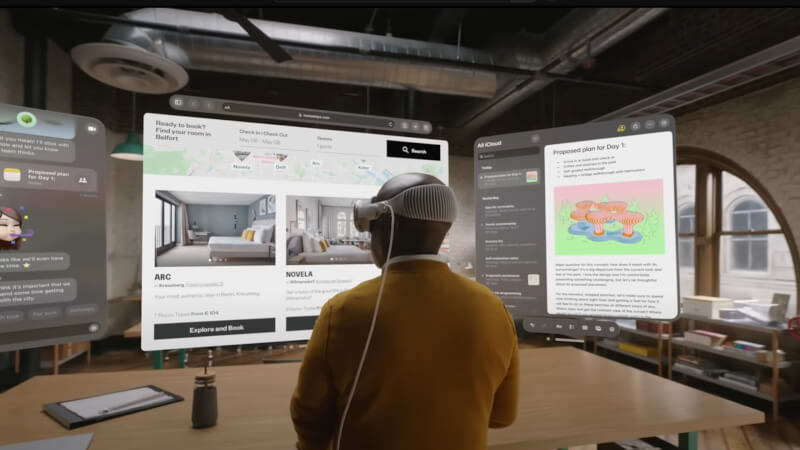
Another big part of the selling point is, of course, the possibility to watch content such as films, series or sports. Here there are great opportunities for an impressive experience where a huge screen surrounds you and the world is shut out.
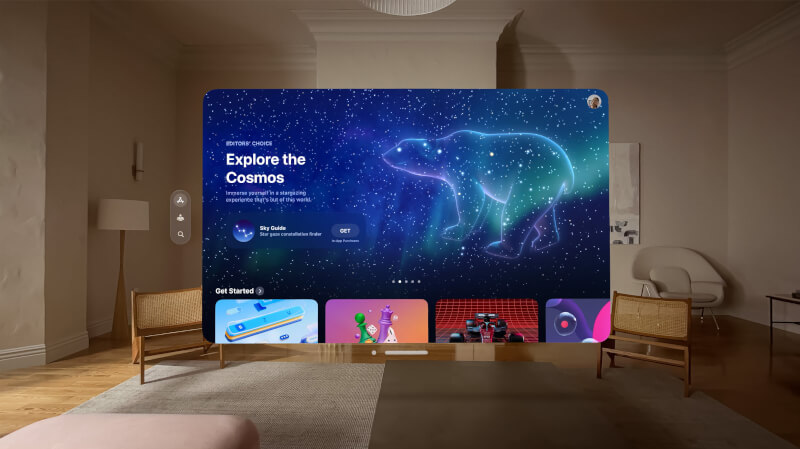
Whether those options will be enough to get the Apple Vision Pro sold, we will have to wait to see until the beginning of next year, when it hits the shelves. In typical Apple style, however, it will probably end up being sold in a big way. Apple has a knack for moving products out to people that others have a hard time selling.
There is a reason why iPhone and iPad are just synonyms for smartphones and tablets for many people.
However, the price alone will set a very natural barrier to how many we will see. Unlike other products from Apple, it is also a product with a somewhat more limited usability.
It's not something you just carry in your pocket and pull out on the train on your way to work. On paper, I personally really like the options that you have with a set like the Apple Vision Pro. In practice, however, I think it will be difficult to get over the barrier that is, after all, strapping a computer to the head.
Latest gadgets
-
19 Sepgadgets
-
23 Maygadgets
LaserPecker LP5 Laser Engraver
-
01 Maygadgets
Swytch launches Swytch Max+ Kit
-
10 Margadgets
DJI AIR 3S
-
03 Margadgets
Razer Wolverine V3 Pro
-
21 Febgadgets
OBSBOT Tiny 2 SE
-
13 Febgadgets
Corsair launches Platform:4
-
17 Jangadgets
Nerdytek Cycon3
Most read gadgets
Latest gadgets
-
19 Sepgadgets
DJI launches Mini 5 Pro
-
23 Maygadgets
LaserPecker LP5 Laser Engraver
-
01 Maygadgets
Swytch launches Swytch Max+ Kit
-
10 Margadgets
DJI AIR 3S
-
03 Margadgets
Razer Wolverine V3 Pro
-
21 Febgadgets
OBSBOT Tiny 2 SE
-
13 Febgadgets
Corsair launches Platform:4
-
17 Jangadgets
Nerdytek Cycon3






